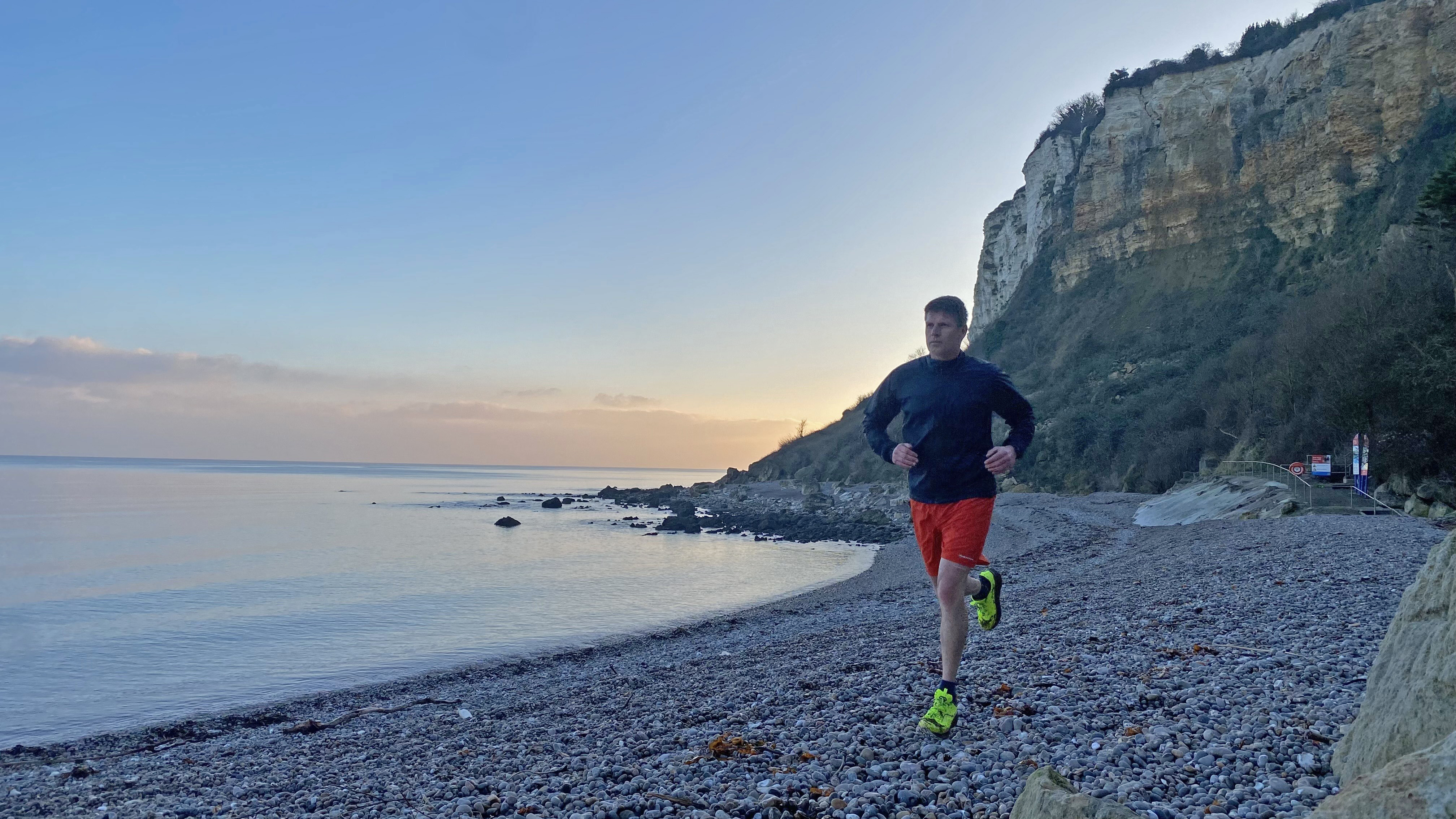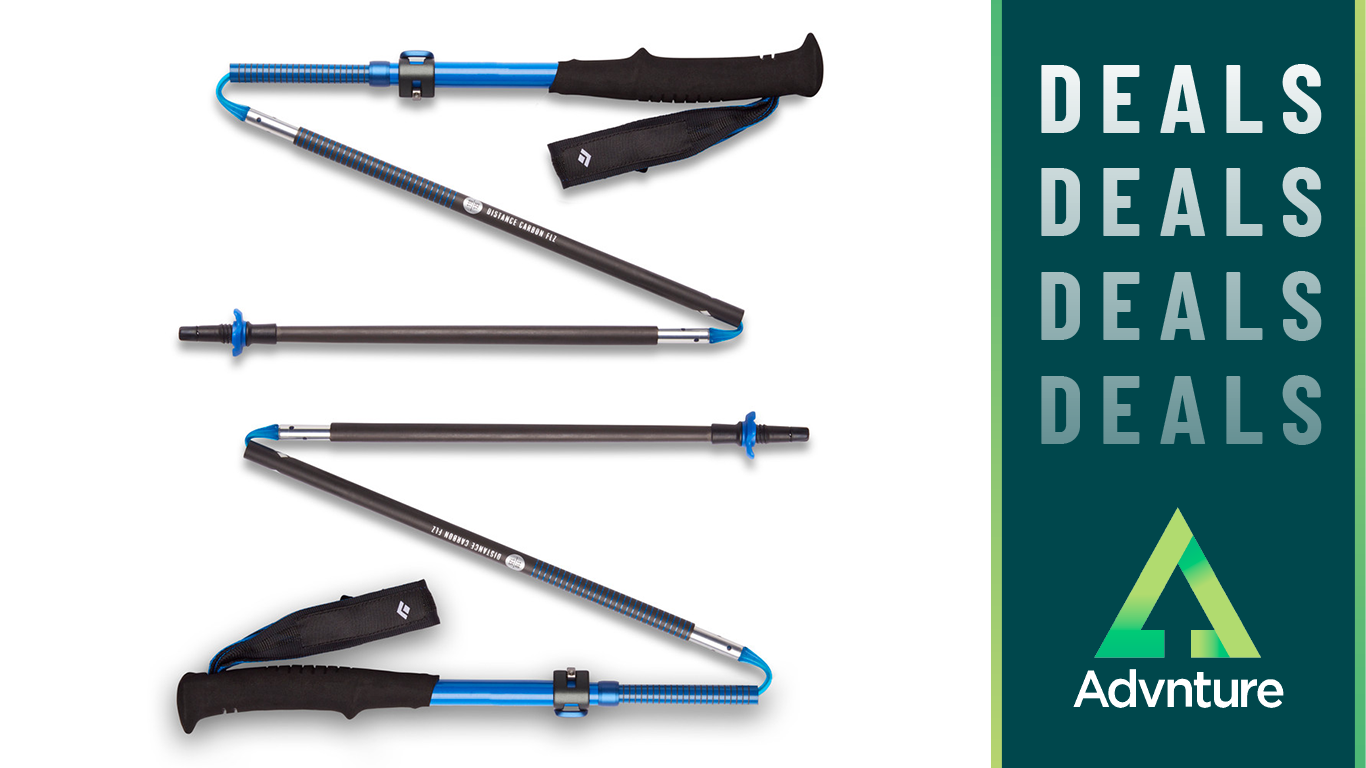Advnture Verdict
Very well-designed, impressively lightweight all-terrain shoes for tackling long distance running challenges and ultra events, the Xodus Ultra 3s from Saucony combine comfort (even after many hours on the trails) with excellent performance levels. The outsole isn’t especially revolutionary, but it does its job in all but the muddiest terrain, and the multilayer make-up of the midsole is highly sophisticated, supplying suspension and support in perfect measure.
Pros
- +
Excellent midsole
- +
Very protective
- +
Super comfortable
- +
Breathable
- +
Decent grip
- +
Firm foot hold
- +
Some recycled materials used
- +
Suitable for vegans
Cons
- -
No trail feel
- -
Grit can enter around tongue
- -
Struggles on slippery mud
You can trust Advnture
I have tested several Saucony running shoes over the years, including multiple versions of the American brand’s popular Peregrine family of trail trotters, a shoe that is now up to its 14th iteration, and which continues to evolve. The Peregrines are excellent for everyday training runs on mixed terrain, but with some larger challenges on the horizon, including a frankly frightening ultramarathon, I’ve been looking for a hoof with bit more substance and support. On paper the Xodus Ultra 3s looked ideal, so I was exited about getting them on my feet to see how they compare to the best trail running shoes on the market.
- Weight (per shoe): 288g / 10.1oz
- Stack Height: 36–30mm
- Heel-to-toe drop: 6mm
- Lug depth: 4mm
- Materials: Synthetic mesh upper, EVA midsole (PWRRUN frame with an internal layer of PWRRUN PB), PWRTRAC outsole
- Colors: Black & dusk / Cinder & shadow / Dove & olivine / Navy & peel / Citron & bough (men’s); Citron & sage / Black & quail / Cloud & cinder / Currant & pepper / Moon & dusk (women’s)
- Compatibility: Perfect for training and racing on tough terrain for any distance, including ultra epics
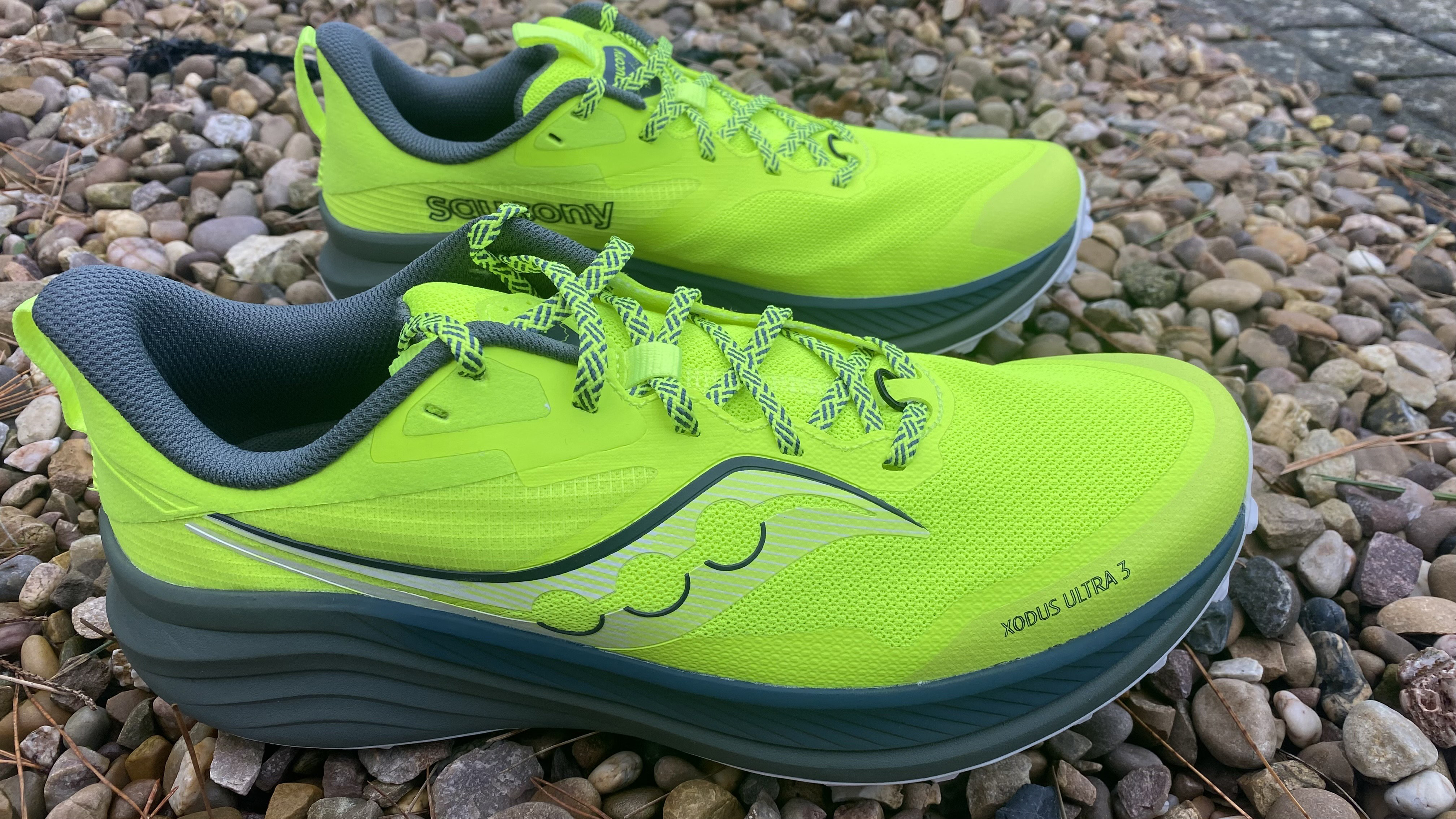
Design and materials
Available in a massive range of color combinations, the Xodus Ultras are a decent looking shoe that somehow manage to combine a deep midsole stack with relatively low profile, so you don’t feel like you have a couple of canoes strapped to your feet. (Lots of people love proper maximist shoes like the Hoka Tecton X, which shares some similarities with the Xodus, but I prefer a slightly smaller footprint personally.)
The upper is made with a synthetic breathable mesh, bolstered by a TPU skeleton, with foam padding around the heel, tongue and under-ankle area. Saucony say that some recycled material has been used in the construction, but they’re coy about how much. The tongue is integrated with the chassis via a partial sock that wraps around the top of the foot. The Xodus Ultra comes with flat laces and has the usual extra eyelet found on serious trail shoes for use in deep boggy terrain (to avoid losing footwear to the gloop), but the placement of this feature on these shoes is closer to the ankle and lower than on most models I’ve tested in the past, allowing you to get an extra firm connection when you lace them up.
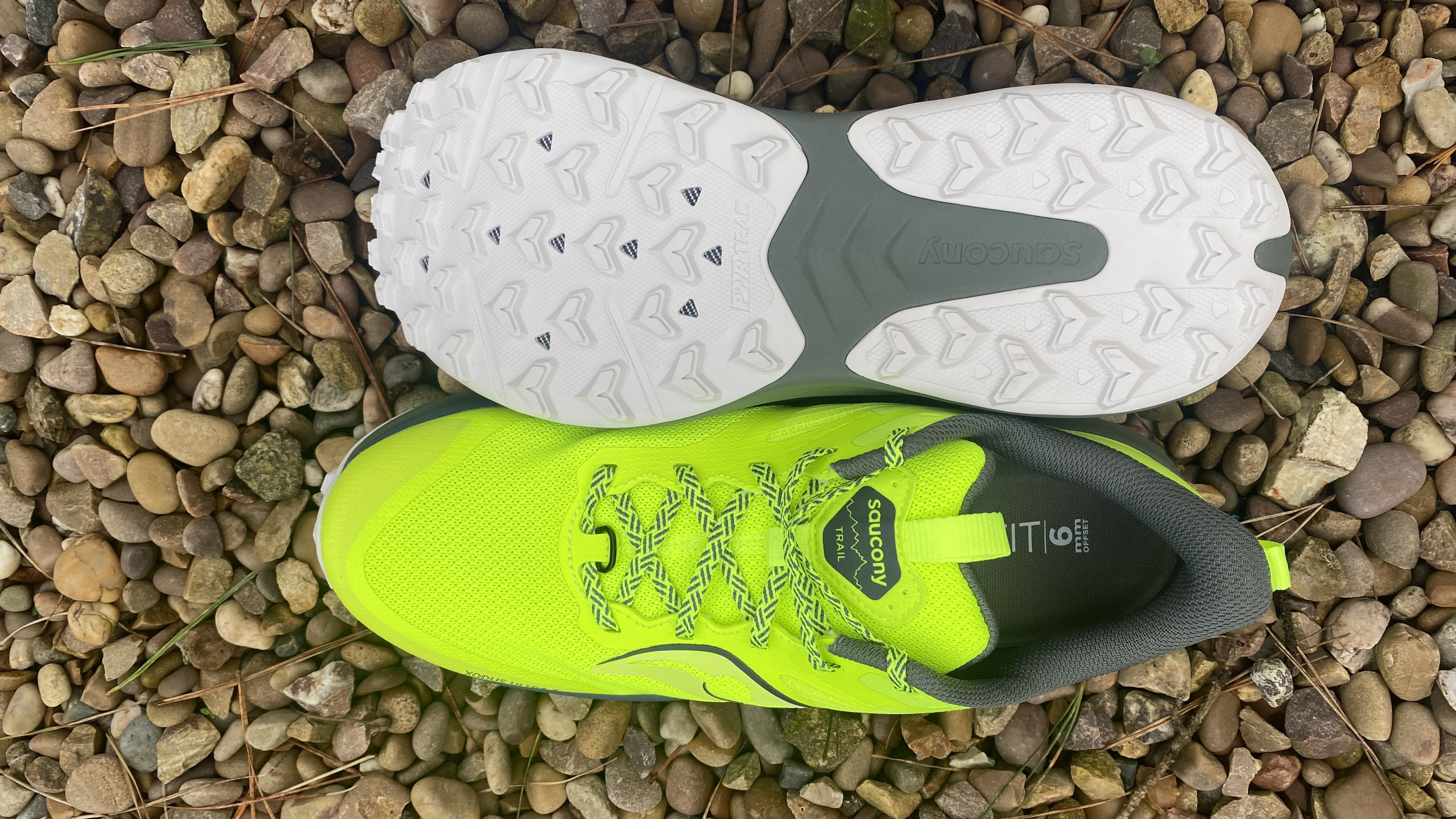
Designed for use during long runs and ultra-length races, much of the magic in the Xodus happens in the midsole, which is thick and multi-structured, featuring Saucony’s (horribly named but very functional) PWRRUN EVA foam plus an internal layer of PWRRUN PB (Saucony's lighter and higher-performing PEBA-blend foam). There is a protective rockplate in the mix too, positioned more towards the front of the shoe, where the stack is slightly shallower, thanks to the 6mm heel-to-toe drop.
The PWRTRAC outsole has a moderately aggressive tread pattern, comprised of arrowhead-shaped 4mm deep lugs (slightly smaller than on the Xodus Ultra 2), arranged to point forward at the front and backwards at the rear. The shoe boasts quite a pronounced rocker, rising at both the heel and the front, and the tread pattern continues up and over the front of the toe.
Other features include a heel hoop at the rear of the shoe, to help you pull them on easily, and a gaiter hook at the bottom of the laces.
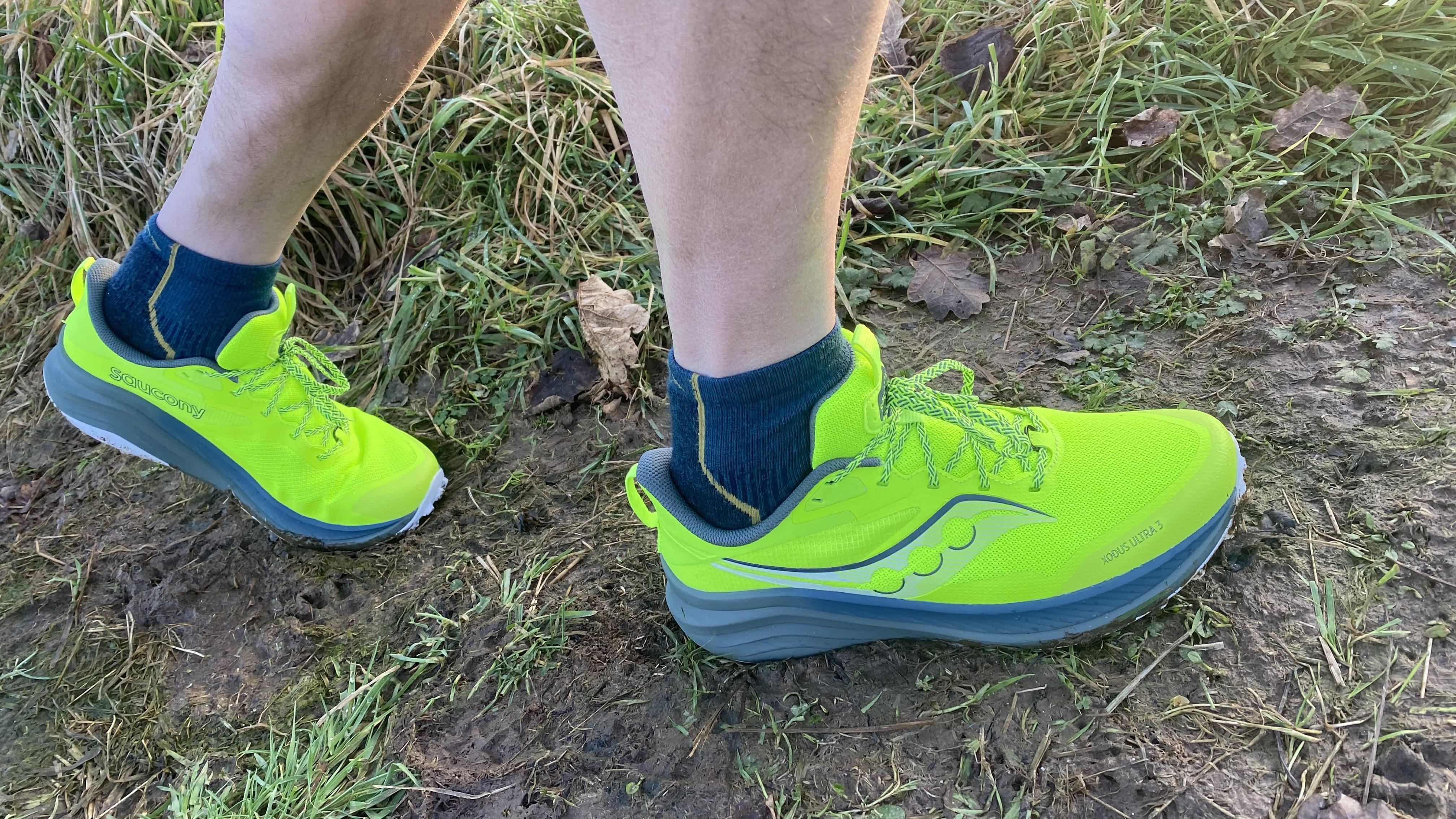
On the trails
I have been testing these shoes on a broad mixture of terrain over the last couple of months, in some very wet and sloppy conditions while I have been attempting to push my mileage northwards in preparation for an upcoming ultra challenge. Other runners using these shoes have mentioned sizing up slightly, but personally I’ve found the fit and sizing to be spot-on, and in my experience there is plenty of room in the toebox to allow your feet to expand during long runs (and I have wide feet).
For longer challenges, when you’re going to be out on the trails for many hours, having a comfortable running shoe is obviously a massive priority, but cushioning can’t come at the expense of performance, otherwise you’ll never get around the course. The stack on the Xodus Ultra 3s is chunky (30mm+), and the midsole is multi-structured, featuring some higher performing PWRRUN PB in the mix, as well as the standard powerfoam stuff. I found the resulting ride to be cushioned enough to keep me comfortable on longer runs, while the requisite amount of rigidity remains to prevent too much energy loss. There’s no trail feedback, of course, but you can’t expect that on a shoe with a deep stack.
The size and thickness of this midsole, combined with the inclusion of a lightweight rockplate, mean the Xodus Ultra 3s are impressively protective, which is something all ultra runners are eternally grateful for (the very last thing you need is puncture injury in your foot during a long race). And, while the toecap looks a bit minimal, it actually extends around the shoe in the form of a partial rand sidewall, which further protects your feet against sharp sticks and stones.
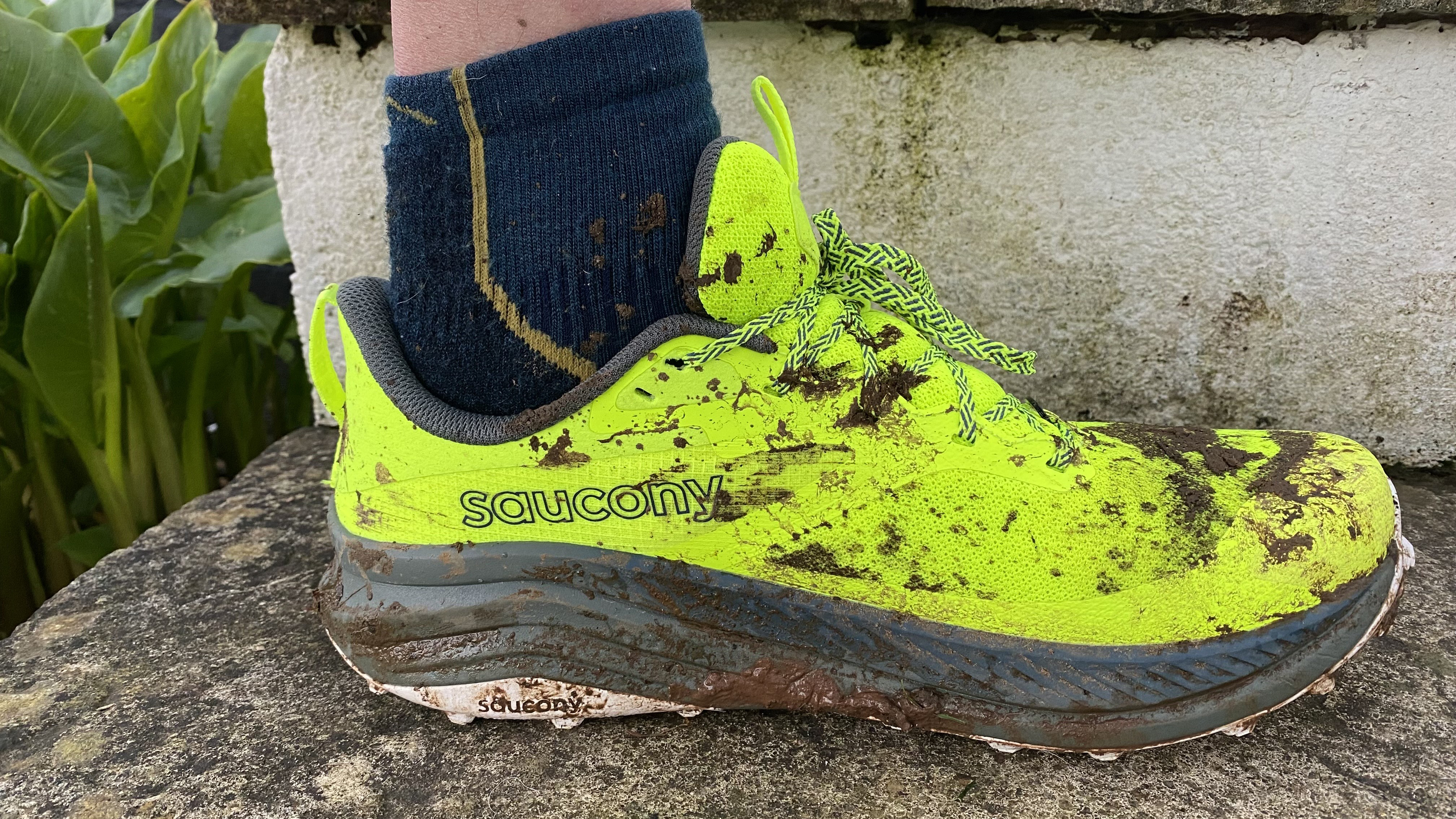
Armed with 4mm teeth, the PWRTRAC outsole boasts intelligently arranged lugs, but the tread pattern doesn’t try to be too clever – it supplies good traction when you’re powering forward (with the extra teeth on the front of the toe providing impressive grip on really steep ascents), and decent braking control on technical descents. The rubber compound is effective on most surfaces, although I have experienced some slippage on really muddy terrain (Saucony have shaved half a milometer from the depth of the lugs since the last edition) and the tread pattern can collect a little bit of muck (although the teeth are well spaced and it does typically shake off quite quickly).
Made with mesh, I found the uppers allowed my feet to breathe nicely, and they also let water drain out quickly after stream crossings. It’s relatively early days, but I haven’t noticed any deterioration of the materials, and the construction appears pretty robust. One slight negative is that grit can ingress into the chassis of the shoe, because the tongue is only partially integrated, and the interior sock doesn’t extend the full length of the laces.

Author of Caving, Canyoning, Coasteering…, a recently released book about all kinds of outdoor adventures around Britain, Pat has spent 20 years pursuing stories involving boots, bikes, boats, beers and bruises. En route he’s canoed Canada’s Yukon River, climbed Mont Blanc and Kilimanjaro, skied and mountain biked through the Norwegian Alps, run an ultra across the roof of Mauritius, and set short-lived records for trail-running Australia’s highest peaks and New Zealand’s Great Walks. He’s authored walking guides to Devon and Dorset, and once wrote a whole book about Toilets for Lonely Planet. Follow Pat’s escapades on Strava here and Instagram here.
